
Before the pandemic, Berkeley’s course reserves program was important but unsung, avoiding the spotlight commanded by The Bancroft Library’s priceless relics or Moffitt Library’s sleek Silicon Valley-adjacent aesthetic.
But for generations the program has served an important purpose: supporting learning by providing students with the materials they need for classes — at no cost.
When the pandemic hit, the UC Berkeley Library was quick to adapt, and course reserves made the leap to 100 percent digital. The newly minted electronic reserves, or e-reserves, program was born of the need to meet students where they were during the pandemic: That is, everywhere.
And now, the Library is making it last. This semester, the program will continue to connect students with free online versions of their course materials — articles, books, and videos — even as classes, slated to be in person, start to edge toward normalcy. Through the program, the Library is plucking one more worry off students’ plates and providing a much-needed dose of financial relief as the pandemic wears on.
“These are historic times, where everything has shifted for our students,” says Salwa Ismail, who oversees the e-reserves program as the Library’s associate university librarian for digital initiatives and information technology. “They have faced challenges from financial issues to food insecurities, and we wanted to ensure that required readings for their classes were one thing they didn’t have to worry about.”
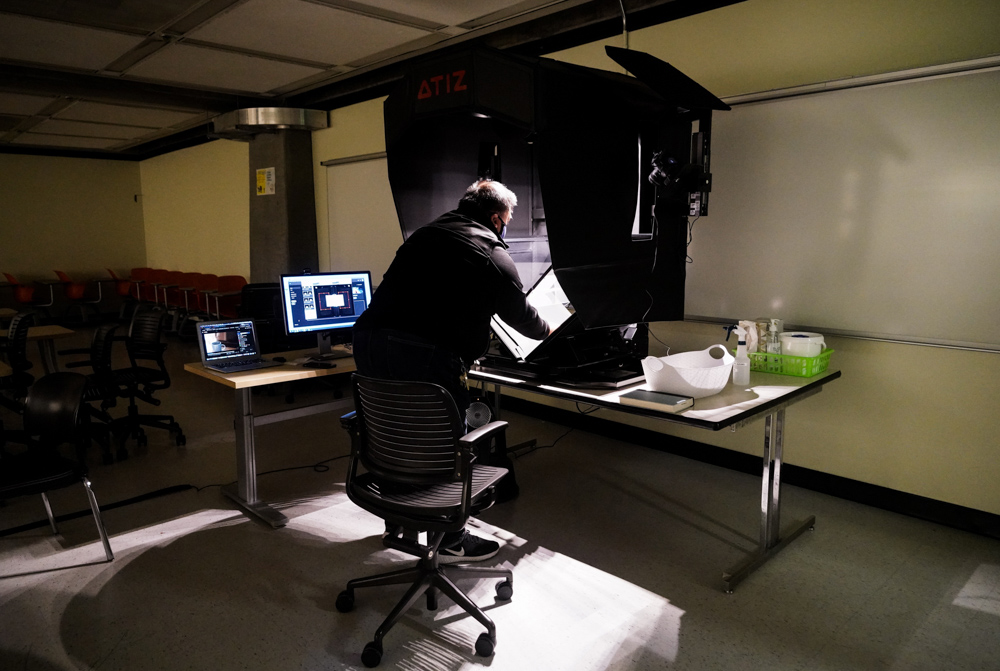
Making it right
As the pandemic set in, economic strains piled onto the already roiling textbook affordability crisis, leaving wallets thin and anxieties high. According to a recent survey, nearly 50 percent of Berkeley students this spring had some level of concern about covering their housing costs for the term, and 46 percent of students were worried about being able to pay for other basic needs, such as food, medication, and clothes.
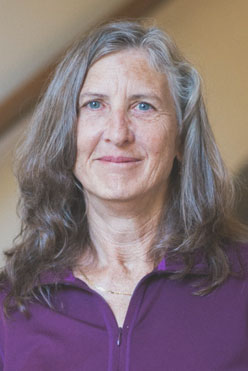
“We’re trying to level the playing field,” says Susan Edwards, Berkeley’s social welfare librarian, who has led the Library’s e-reserves efforts. “That’s what the goal of reserves always is — to say that, ‘You shouldn’t not be able to take this art history class because you can’t afford the textbooks.’ That’s not right.”
The stratospheric costs of textbooks are well-documented, having risen 88 percent between 2006 and 2016, according to a Bureau of Labor Statistics report. Estimates show Berkeley undergraduates should expect to spend $1,118 on books and supplies in the 2021-22 academic year.
“We have students choosing what classes they take based on how expensive the books are,” Edwards says. “That’s ridiculous. At a top-tier public university, we should be providing it, and we do, with reserves.”
Making it work
Creating an e-reserves program on short notice was a tall order.
Shortly after the pandemic took hold, the Library brought together a patchwork of impassioned employees — a team coordinated by Lillian Lee, of the Anthropology Library — including staff members who had never worked together, or on a project of this kind, before.
As soon as the work started, the challenges came into view. In some cases, digital versions of course readings were simply unavailable. Other times, they were available, but prices were through the roof. For example, one text was priced at $700 for a single-user license — meaning one single person could use the book at any given time — making it utterly cost-prohibitive to purchase for an entire class.
And the hefty price tags didn’t apply only to books. When it comes to streaming video, providing students with just one year of access can cost upward of $150 per title. With hundreds of streaming requests each semester, costs can add up quickly.
During the pandemic, media requests for courses have tripled, says Gisèle Tanasse, film and media services librarian. When videos weren’t available any other way, Tanasse got creative to fill in the gaps, digging into her personal collection and once enlisting her brother’s help in getting a short clip from a DVD she knew he had to help meet the needs of Berkeley classes.
But why can’t students just hop onto Netflix and find what they need?
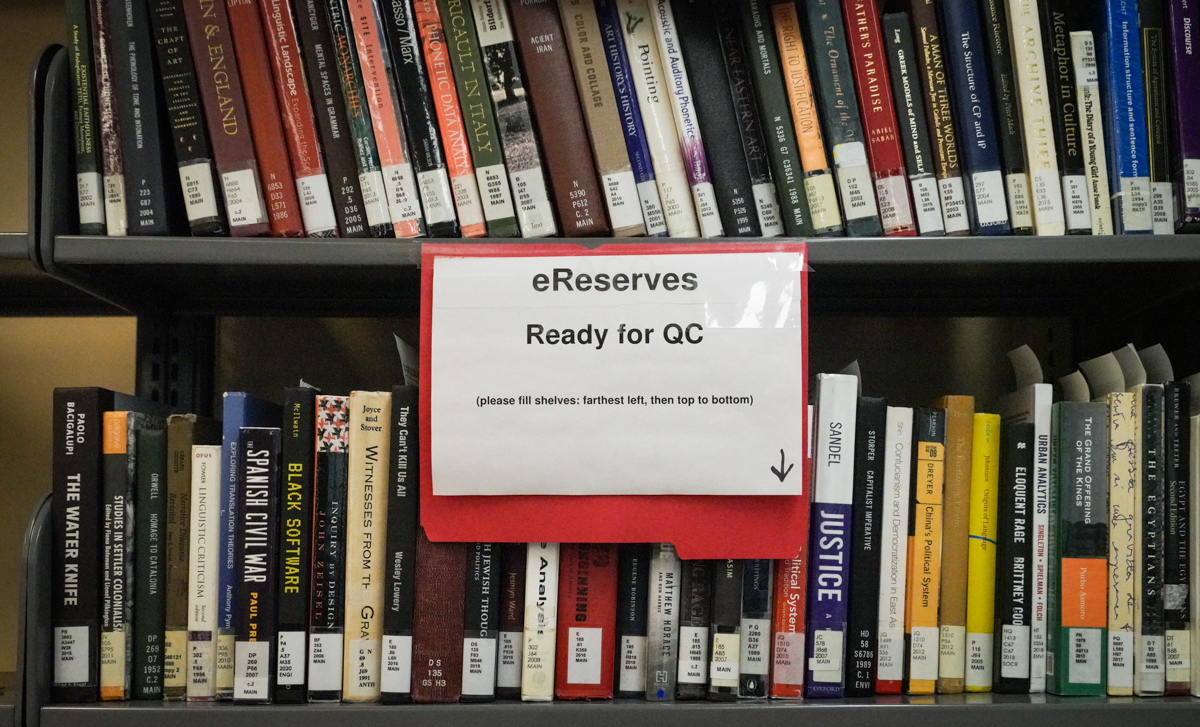
First off, some students are living in countries where Netflix and other streaming services are not available. On top of that, Netflix and other direct-to-consumer streaming platforms retain the educational rights to their exclusive content (with some exceptions), but they often sit on those rights, locking educational institutions out.
Without the help of the Library, students would be left to navigate this complicated maze — and forced to foot the bill for videos and subscriptions — themselves.
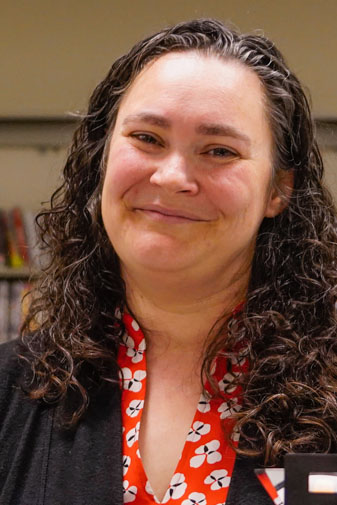
“We have students right now who are studying from all around the world,” Tanasse says. “So there’s streaming content that folks in the United States have easy, relatively cheap access to through Netflix or an Amazon rental, but there’s a big equity issue there in terms of: Do you have the money to put toward a personal Netflix or Amazon account?
“Some students do, and many students don’t.”
As an undergrad at Berkeley, Tanasse commuted from home all four years of college, relying on the AC Transit Class Pass — which provides students with unlimited rides on AC Transit buses — when she didn’t have gas money.
“Without this bus pass, I literally had no way to get to class,” she says. “We know it’s a similar situation for course content today.
“Some students have to choose between course materials and basic needs.”
Making it last
When facing the e-reserves program’s steepest challenges, the Library turned to two of its prized resources: its expansive collections and its prolific digitization program.
In cases where books were unaffordable or unavailable in electronic form, the Library scouted out its own physical copies, scanning them page by page and putting them online, where students, wherever in the world they may be, could access them.
But digitization during a pandemic came with challenges of its own.

Because staff members needed access to the on-site equipment to scan materials, some people were asked to return to campus in the early days of the lockdown, back “when we were still washing groceries,” says Lynne Grigsby, who, as head of Library IT, oversees the Library’s digitization efforts. Before they could get to work, equipment had to be carefully moved into separate rooms to ensure Imaging Services staff members — joined in the effort by people from other units in the Library — could work at a safe distance from one another. All of these changes, and more, were crucial to safely pull off the digitization required of the project, says Grigsby, who notes an affinity to the mission of the e-reserves program.
“I was raised by a single mother … which is to say, money was often tight, and I know that is still true for many of our students,” she says. “Having made choices of books or other necessities, I feel enormous pride at any help I can give to alleviate others of that decision.”
Once digitized, the materials aren’t available only to Berkeley students: Through the HathiTrust Digital Library, the Library has been sharing its digitized volumes with libraries all over the world.
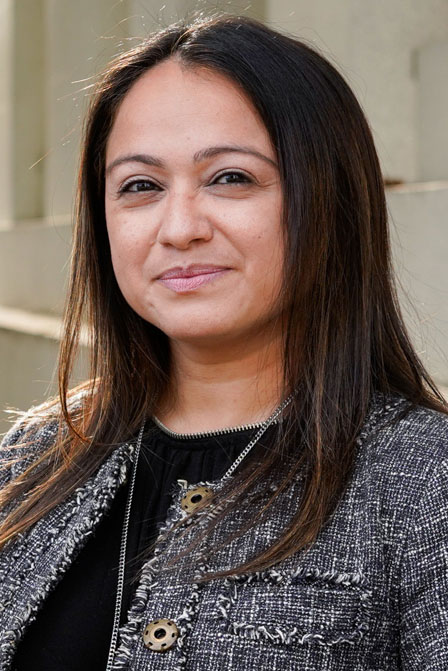
This fall, the Library’s course reserves program will continue to be 100 percent digital, but it will look slightly different, says Ismail, who oversees the Library’s Digital Lifecycle Program, which works to expand scholars’ access to materials online. When faced with the choice of how to deliver course materials to students as they return to the classrooms for the first time in nearly a year and half, the Library decided to double down on digital. To keep the e-reserves program running, the Library is using its own “controlled digital lending platform,” through which students can access their course materials online. Called UC BEARS — UC Berkeley Electronic and Accessible Reserves System — the platform is open source and was developed in-house by the Library’s IT team, inspired by work done at Caltech. This fall, Berkeley will become the first campus in the University of California system to launch a controlled digital lending platform offering full books for course reserves.
“With UC BEARS, the Library is taking a bold step forward,” Ismail says. “By bringing course materials from our shelves to students’ screens, we’re providing an innovative solution to a long-standing problem, and helping relieve students of the burden caused by the ballooning costs of textbooks and other course materials.”
Making a difference
Since it began, more than 800 classes, spanning the disciplines and enrolling 40,000-plus students, have benefited from the e-reserves program. Members of the team have been flooded with warm notes of gratitude from instructors, who have praised the “heroic work” of the Library, a “buoy in these trying times.”
“I’ve been a librarian for 40 years — literally 40 — and this is one of the most exciting and rewarding projects I’ve been involved in, because its impact is so great,” Edwards says. “That’s a long time to be a librarian, and I have never heard faculty make the kind of statements they’ve made … about not being able to have taught their classes without us.
“Everyone gives lip service to how important the Library is. …. But this time it feels like, ‘Oh, no, you actually mean it.’ You couldn’t have done it without the work of this team.”
Illustration by A. Hamilton